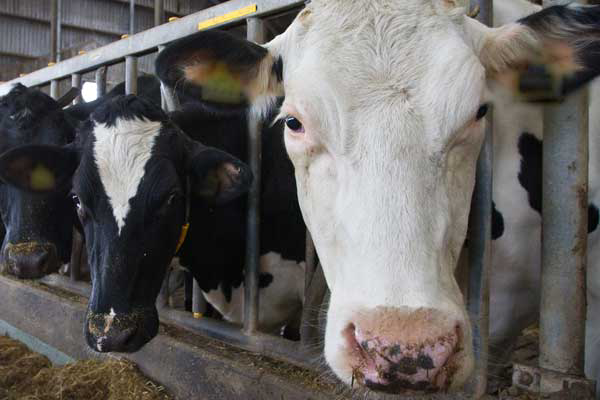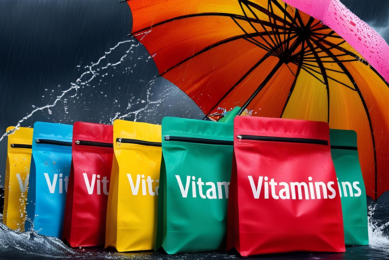Where does your lysine end up and what does it cost?

Increased protein costs and environmental concerns related to excessive nitrogen excretion have forced dairy nutritionists to alter ration formulation. However, they need to be aware of the limitations involved with feed ingredients related to ruminant protein nutrition.
By Matt Christofferson, product manager, Kevin Herrick, technical service manager, Kemin Industries, Des Moines, Iowa
One method that is commonly used to influence nitrogen excretion, is to reduce the amount of protein supplied to the animal. The risk associated with this approach is that the protein, and more specifically the amino acid requirement of the animal will not be met. Improved understanding of ruminant protein metabolism has allowed researchers to develop more sophisticated models for ration formulation. These improved models give nutritionists the ability to reduce dietary crude protein while still having confidence that animal production and health will not be affected.
History of protein – nutrition in ruminants
Historically, nutritionists have formulated lactating dairy cow diets to meet crude protein requirements. This was done because our understanding of specific amino acid requirements was not well defined. Some of the reasoning behind this philosophy was related to the complexity of nitrogen metabolism in the rumen. Rumen microbes rapidly degrade protein in the diet, which makes it difficult to determine the levels of protein being supplied to the cow. Additionally, the different types of protein have different rumen degradation characteristics when moving through the rumen. One fraction is rapidly degraded while another fraction escapes rumen degradation. The proportion of each fraction is largely dependent on the type of protein as well as cow response to management and nutritional factors.
When researchers first identified these two fractions of protein, they denoted the fraction that escapes rumen fermentation as rumen undegraded protein
(RUP) and the fraction that is degraded in the rumen as rumen degraded protein (RDP). The RUP escapes rumen degradation and reaches the small intestine where it can be absorbed and utilised by the cow, while RDP is utilised by the microbes in the rumen and is not directly available to the animal. This discovery was a significant step forward in ruminant protein metabolism; however, it still fell short of recognising the animal’s true requirements of metabolisable protein (MP).
Metabolisable protein is defined as true protein absorbed in the small intestine. This can include microbial protein that passes from rumen, endogenous protein, and protein from the diet that escapes through the rumen undegraded. Ultimately, a cow’s nutritional requirement is for specific amino acids and not MP. As a result, nutritionists are focused on the amino acids supplied by the MP.
Of the amino acids, quite often the first two limiting amino acids for lactating dairy cows are lysine and methionine. The National Research Council (NRC) 2001 has identified the requirements of these two amino acids based on peer reviewed research. Their evaluation concluded a relationship between the effects of supplementing MP lysine and MP methionine and increases in milk and milk protein production.
How is MP lysine supplied?
The primary source of MP lysine is microbial protein that passes from the rumen. This is why maximising rumen microbial production is a priority for nutritionists. Even when maximised, the microbial protein produced does not meet the MP lysine requirements of today’s high producing dairy cows. As a result we are forced to rely on additional sources of protein. Feedstuffs that contain a higher percentage of RUP and are utilised in dairy cow diets include: blood meal, fishmeal, and heat-treated soybean products. These products all contain an inherent level of variability. This can be attributed to the quality of the raw material or the manner in which it was processed. Excessive temperatures during processing or storing can result in binding between the amino acids and other components, which would render the amino acids unavailable to the animal. Due to these constraints, rumen protection technologies have been utilised creating a number of commercially available amino acid products.
Evaluating rumen protected lysine products
To successfully utilise rumen protected lysine products, a clear understanding of the characteristics that determine product efficacy is needed. A focus on only one of the characteristics (eg. % bypass) can be misleading. The characteristics that need to be considered include:
Lysine concentration = Percent of the product that is lysine (% Lysine HCl x 78.8% = % lysine). Rumen Bypass = Percent of the lysine contained by the product that is undegraded in the rumen. Intestinal Availability = Percent of the undegraded lysine that is available for absorption by the intestines and available for use by the animal. Metabolisable Lysine (MP lysine) = Percent of the total lysine contained in the product that is available and utilised by the animal. (100 x % Bypass x % Intestinal Availability = % Metabolisable Lysine).
An illustration of rumen protected lysine products with differing characteristics are shown in Figure 1.
Complex metabolism
Lysine concentration, rumen bypass, intestinal availability and metabolisable protein are just a few of the factors that are involved with successfully implementing an amino acid formulation strategy for lactating dairy cows. As can be inferred from the previous discussion, ruminant protein metabolism is complex and cannot be succinctly summarised in a single article. However, recognising a few of the basic principles related to protein characteristics and quality can allow for improved ration formulation and animal performance. Furthermore, understanding how to correctly evaluate commercial products developed to provide a rumen protected source of amino acids will allow nutritionists to incorporate these products in the most cost effective manner.
For more information you can contact:
Matt.Christofferson@kemin.com;
Comparing the metabolisable lysine percentages of the products
The percent of MP lysine is calculated using both the rumen bypass and intestinal availability. A product may exhibit a higher rumen bypass rate than a competitor but due to its inability to release the contained lysine in the small intestine, it contains a lower percentage of available lysine. In such instance, much of the lysine completely bypasses the animal’s digestive tract and ends up in the manure. An example is shown below and graph on previous page.
Example of Metabolisabile Lysine Calculation: Product 1: 100% of contained lysine x 45% rumen bypass x 90% intestinal availability = 41% MP lysine
Example of Metabolisabile Lysine Calculation: Product 3: 100% of contained lysine x 85% rumen bypass x 16% intestinal availability = 14% MP lysine
Comparing the amount of metabolisable lysine provided by the product
Rumen protected lysine products contain varying amounts of lysine. Two products may have similar rates of bypass and intestinal availability which results in comparable % MP lysine levels.
When differences in lysine concentrations are taken into account, one product may provide more grams of MP lysine per pound (454 g) of product. An example is shown below and graph on previous page.
Example of Metabolisabile Lysine Calculation: Product 1: 454 g of product x 38% lysine concentration x 41% MP lysine = 70 grams of MP lysine/1.0 lbs of Product 1
Example of Metabolisabile Lysine Calculation: Product 2: 454 g of product x 20% lysine concentration x 41% MP lysine = 37 grams of MP lysine/1.0 lbs of Product 2
Comparing the cost per gram of metabolisable lysine provided by the products
The overall factor determining the true value of these products is the cost per gram of MP lysine provided by the product. A comparison of the three products is shown using
estimated costs.
Example of Metabolisabile Lysine Calculation: Product 1: (US$2.50/lb of Product 1) / (70 grams of MP lysine/1.0 lbs of Product 1) = US$0.035/gram of MP lysine
Example of Metabolisabile Lysine Calculation: Product 2: (US$2.25/lb of Product 2) / (37 grams of MP lysine/1.0 lbs of Product 2) = US$0.061/gram of MP lysine
Example of Metabolisabile Lysine Calculation: Product 3: (US$2.35/lb of Product 3) / (23 grams of MP lysine/ 1.0 lbs of Product 2) = US$0.102/gram of MP lysine
Even though the price per pound of Product 1 is higher, Product 1 provides available lysine at a lower cost than Products 2 or 3.











